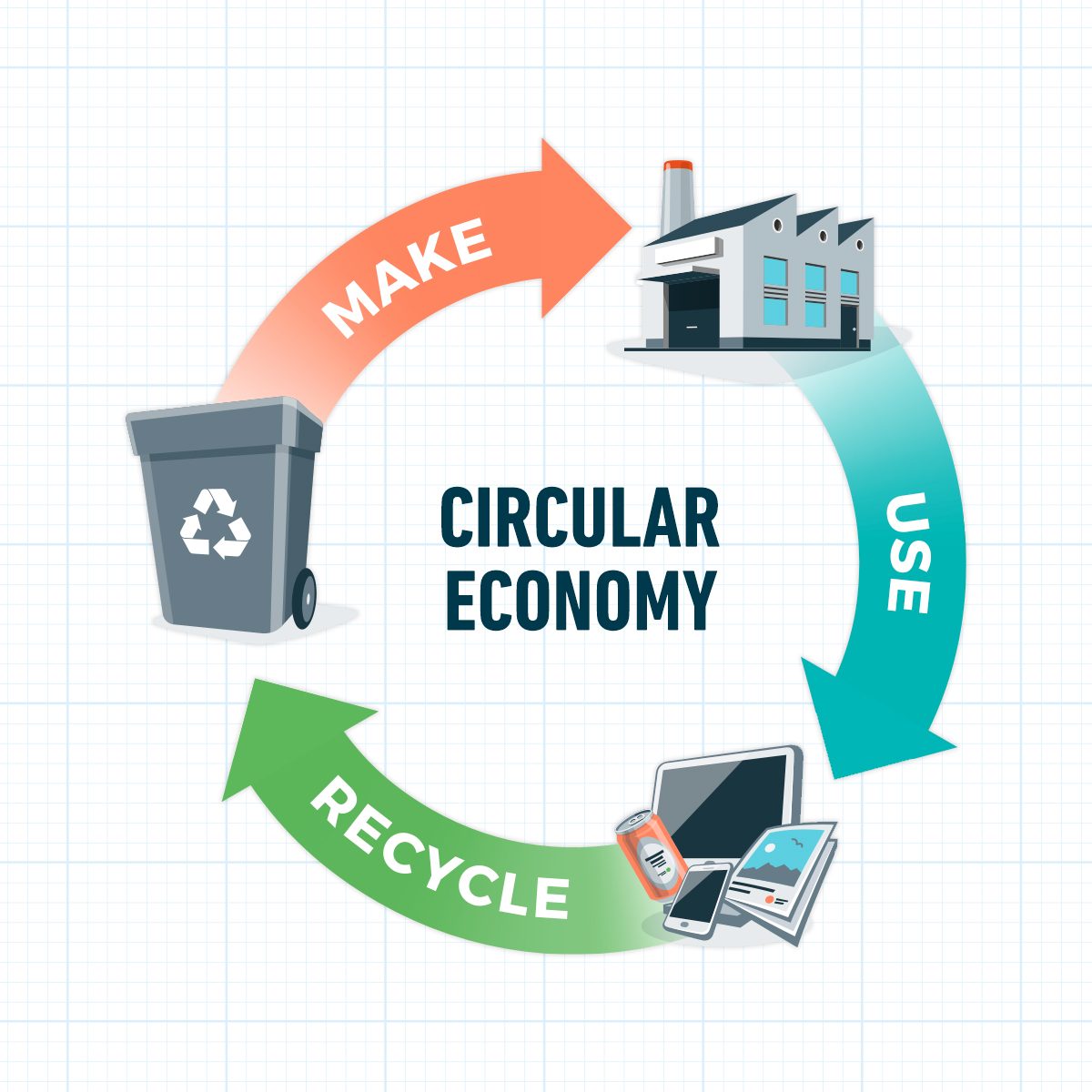A circular economy is all about stuff — or, more specifically, reducing the amount of stuff we waste as humans.
As a reader of FamilyHandyman.com, there’s a good chance you’re participating in a circular economy already. Repairing household items, upcycling and steering away from single-use plastic all contribute.
“Indigenous communities have been practicing circularity for centuries,” says Jasmine Dhaliwal, a policy assistant at Green Alliance. “But even in the Western world, our excessive, throwaway attitude towards consumption is relatively new.” Dhaliwal cites a 1955 issue of LIFE magazine featured a section on throwaway living, “hailing the invention of disposable plastics that would make household chores easier,” she says.
Today, it’s becoming clear the widespread adoption of single-use plastics was short-sighted. To dig our way out of the consequences of that and other wasteful practices, there’s a growing movement toward a circular economy. Here’s what that looks like.
What Is a Circular Economy?

A circular economy is a system that preserves resources by reusing and repurposing existing products and/or the materials used in making them, rather than manufacturing and consuming new ones. Ultimately, that will help us regenerate our natural ecology so it can sustain future generations, benefiting people and the planet.
“It’s a new pathway — cradle-to-cradle instead of cradle-to-grave — for how we make and consume,” says a spokesperson for Rochester Institute of Technology’s Golisano Institute for Sustainability.
Think of it like a tree. When a branch falls to the ground, it feeds fungi and insects, which break down the wood into soil. That soil becomes food for the tree to grow new branches, and the whole process acts as a circle.
But if we throw that fallen branch in the landfill, it takes up space and diverts resources away from the natural world. That process is a line, similar to our linear economic systems today.
A shift to a circular economy means valuing reuse over resource extraction. That will require major changes to our business climate and cultural mindset. Economically speaking, this means putting greater value on the “embodied energy” in a product, or all of the mining, extraction, processing and transporting of materials that went into making it.
Governments around the world are starting to embrace the idea, especially the Netherlands, which set a target to halve resource use by 2030.
Why Adopt a Circular Economy?
Climate change, biodiversity loss, pollution and water worries are among the driving forces behind global and local efforts to switch to a more circular economy.
Resource extraction and processing are responsible for 90 percent of biodiversity loss and 50 percent of greenhouse gas emissions. So if we can keep products and materials in circulation as long as possible, we can minimize these problems.
“This means moving away from the ‘take, make, use, throw’ culture that currently dominates consumption patterns, and prioritizing demand reduction, reuse, repair, remanufacturing, recycling and so on,” says Dhaliwal.
The restorative and regenerative nature of circular economies also benefits people. Marine plastic waste in Costa Rica is being repurposed into high-value products like architectural decorative pieces. Just this one initiative creates green jobs and helps sustain fishing villagers’ livelihoods.
Defining Principles of a Circular Economy
According to the Ellen MacArthur Foundation, a circular economy nonprofit, the defining principles of a circular economy are:
- Designing out waste and pollution. This includes “decoupling,” which means breaking the link between economic goods and their negative environmental impacts. Making products with previously used materials would be one example.
- Keeping products and materials in use for as long as possible. This includes remanufacturing, refurbishing, repairing, reusing and recycling.
- Regenerating natural systems. An economy that values materials already in economic circulation regenerates ecosystems rather than destroying them.
One thing that’s not an example of a circular economy: Swapping out plastics for more sustainable alternatives like compostables.
“While this is a step in the right direction, all materials have impacts and staying in a single-use mindset is dangerous for people and the planet,” says Dhaliwal. “A circular economy where we reduce demand as a whole will help us live healthily within our planetary limits.”
Ways To Support a Circular Economy
In a nutshell: reduce, reuse and recycle, in that order.
We’re using twice as many resources as we should to live within our planetary boundaries and remain sustainable. Experts say supporting a circular economy means consuming less and encouraging systematic change to reduce waste.
“Reuse is the next most important, as it helps keep materials at a high value and reduces demand for new products, then recycling should be seen as a last resort,” says Dhaliwal.
DIY-ing and sharing your DIY skills are great ways to support a circular economy. Think:
- Upcycling and repairing household items instead of replacing them;
- Planning new projects carefully to reduce the amount of materials you need;
- Seeking out second-hand materials where possible;
- Sharing or renting tools, especially those you don’t need often;
- Flexing your creativity and ingenuity to come up with new ways to use less.
Did you miss our previous article...
https://rsssuperfeeds.com/life-hacks/make-an-outdoor-table-with-kids






